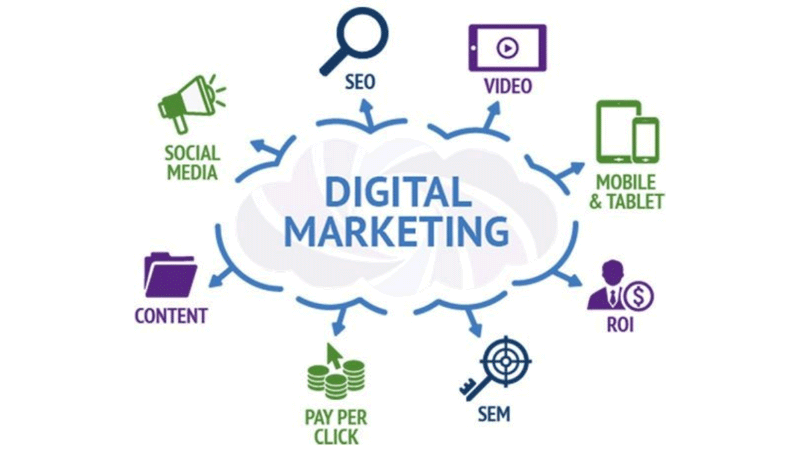Transform Your Company With Data-Driven Digital Advertising
In today's rapidly evolving marketplace, leveraging data-driven digital marketing has become crucial for companies aiming to boost their one-upmanship. By using analytics to gain insights into customer actions, companies can customize their advertising and marketing techniques for maximum effect. This method not only fosters deeper involvement yet additionally boosts brand commitment through customized experiences. As we discover the complexities of implementing reliable data-driven methods, it is important to think about exactly how these approaches can fundamentally reshape your marketing efforts and affect your lower line. What crucial elements should you focus on to guarantee success?
Comprehending Data-Driven Advertising
Data-driven advertising is significantly acknowledged as a vital approach for services intending to enhance their advertising efficiency. This methodology depends on the systematic collection, evaluation, and utilization of data to inform advertising approaches and choices. By leveraging different information resources, consisting of customer demographics, behavior patterns, and market fads, businesses can establish targeted projects that reverberate with certain target markets.
At its core, data-driven advertising and marketing includes incorporating analytics into the marketing process. This permits real-time insights right into campaign efficiency, enabling online marketers to make informed adjustments and optimize their approaches. By comprehending customer choices and involvement levels, companies can craft tailored messaging that is more likely to transform prospective clients right into dedicated clients.
Additionally, data-driven advertising and marketing promotes a society of accountability within companies. As services accept data-driven advertising, they place themselves to respond effectively to altering market characteristics and customer assumptions.
Advantages of Data Analytics

Among the main benefits is the capacity for customized advertising and marketing. Data analytics enables companies to section their target market properly, tailoring messages and uses that resonate with specific groups. This level of personalization not only improves engagement prices yet also cultivates brand loyalty.
In addition, data analytics facilitates real-time decision-making. Online marketers can monitor campaign efficiency continuously, readjusting techniques based upon immediate comments and results. This dexterity leads to maximized resource allowance and improved roi.
Additionally, predictive analytics empowers organizations to prepare for future trends and customer demands, permitting positive strategies as opposed to reactive measures. This foresight can be a considerable competitive advantage in today's dynamic market landscape.
Trick Devices and Technologies

Among the crucial technologies is Consumer Partnership Management (CRM) software application, which allows companies to manage consumer interactions and assess information throughout the client lifecycle. Furthermore, advertising and marketing automation systems improve repeated jobs, facilitating tailored interaction and lead nurturing.

Data visualization devices, such about his as Tableau and Google Information Studio, help professionals interpret complicated information sets, providing understandings in a quickly digestible style. Analytics platforms like Google Analytics provide indispensable metrics on web site traffic and customer behavior, making it possible for marketing experts to optimize their methods - Digital Marketing Lockhart.
Social network analytics devices, such as Hootsuite and Sprout Social, offer understandings right into target market interaction and content performance across different systems. Finally, A/B screening devices, like Optimizely, enable marketing professionals to experiment with various strategies, making sure that data-driven choices are continuously fine-tuned. By leveraging these modern technologies, companies can cultivate a data-centric culture, other resulting in more effective digital advertising campaigns.
Carrying Out Effective Strategies
To successfully apply reliable techniques in digital marketing, organizations should initially align their purposes with workable insights obtained from information analytics. This positioning allows services to tailor their advertising and marketing efforts, guaranteeing they reverberate with target audiences. By leveraging data from different channels, such as social media sites, e-mail advertising and marketing, and web site analytics, companies can recognize fads, preferences, and behaviors that inform their strategy.
Next, it is important to focus on client division. By categorizing their audience based on demographics, rate of interests, and buying actions, companies can produce customized advertising campaigns that drive interaction and conversion. Automation tools can facilitate this process, enabling online marketers to deliver timely, relevant web content to particular segments.
Furthermore, embracing a nimble marketing method can improve responsiveness to market changes and client feedback. Regularly analyzing campaign efficiency and making data-driven adjustments can enhance end results and resource appropriation.
Lastly, cultivating a society of partnership between advertising, sales, and information analytics teams is necessary. This multidisciplinary approach guarantees that understandings are efficiently shared and incorporated right into broader service methods, ultimately driving continual growth in an affordable landscape.
Gauging Success and ROI
Exactly how can companies successfully determine success and roi (ROI) in digital advertising? The solution depends on establishing clear purposes and using the ideal metrics. Beginning by defining key click now efficiency indicators (KPIs) that line up with service objectives, such as conversion rates, client procurement costs, and engagement metrics. These KPIs give a quantitative basis for assessing the performance of electronic marketing efforts.
Making use of analytics tools is important in this procedure. Systems such as Google Analytics and social networks insights enable organizations to track user behavior and project efficiency in real time. By examining data, companies can recognize which techniques produce the very best outcomes and assign resources accordingly.
Furthermore, using ROI estimations can give a more clear image of economic efficiency (Digital Marketing Lockhart). This includes measuring the income produced from electronic advertising and marketing initiatives versus the total costs sustained. An uncomplicated formula is (Net Revenue/ Cost of Investment) x 100 to identify the ROI portion
Ultimately, a detailed technique that combines qualitative and quantitative analysis will enable companies to assess their digital advertising and marketing success properly and make informed decisions for future campaigns. This data-driven mindset is important for continual enhancement and lasting development.
Verdict
In final thought, the combination of data-driven electronic advertising represents a transformative approach for organizations seeking to enhance engagement and foster brand commitment. By leveraging analytics to inform approaches, companies can optimize source allocation, adapt to market characteristics, and boost return on financial investment. The utilization of crucial devices and technologies better facilitates this process, making sure that marketing initiatives are lined up with customer actions and assumptions. Inevitably, welcoming data-driven methodologies is vital for sustained affordable advantage in a rapidly advancing landscape.
In today's quickly progressing market, leveraging data-driven digital advertising has come to be vital for organizations aiming to boost their competitive edge (Digital Marketing Lockhart).Data-driven marketing is significantly acknowledged as a crucial approach for companies intending to boost their advertising and marketing efficiency.At its core, data-driven advertising and marketing involves integrating analytics right into the advertising process. As companies welcome data-driven marketing, they position themselves to respond effectively to altering market dynamics and customer expectations
In conclusion, the integration of data-driven digital marketing represents a transformative technique for companies seeking to boost interaction and foster brand commitment.